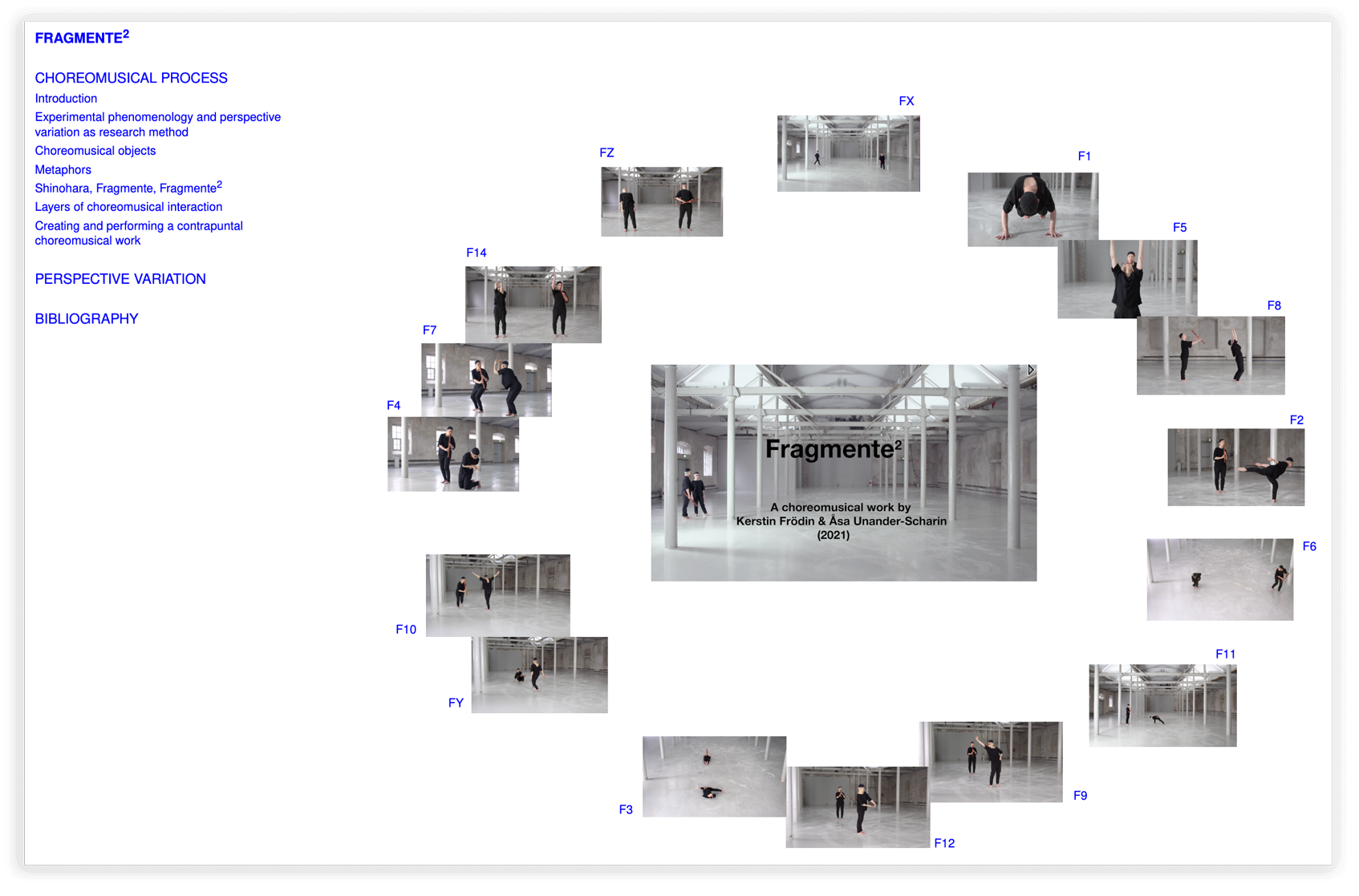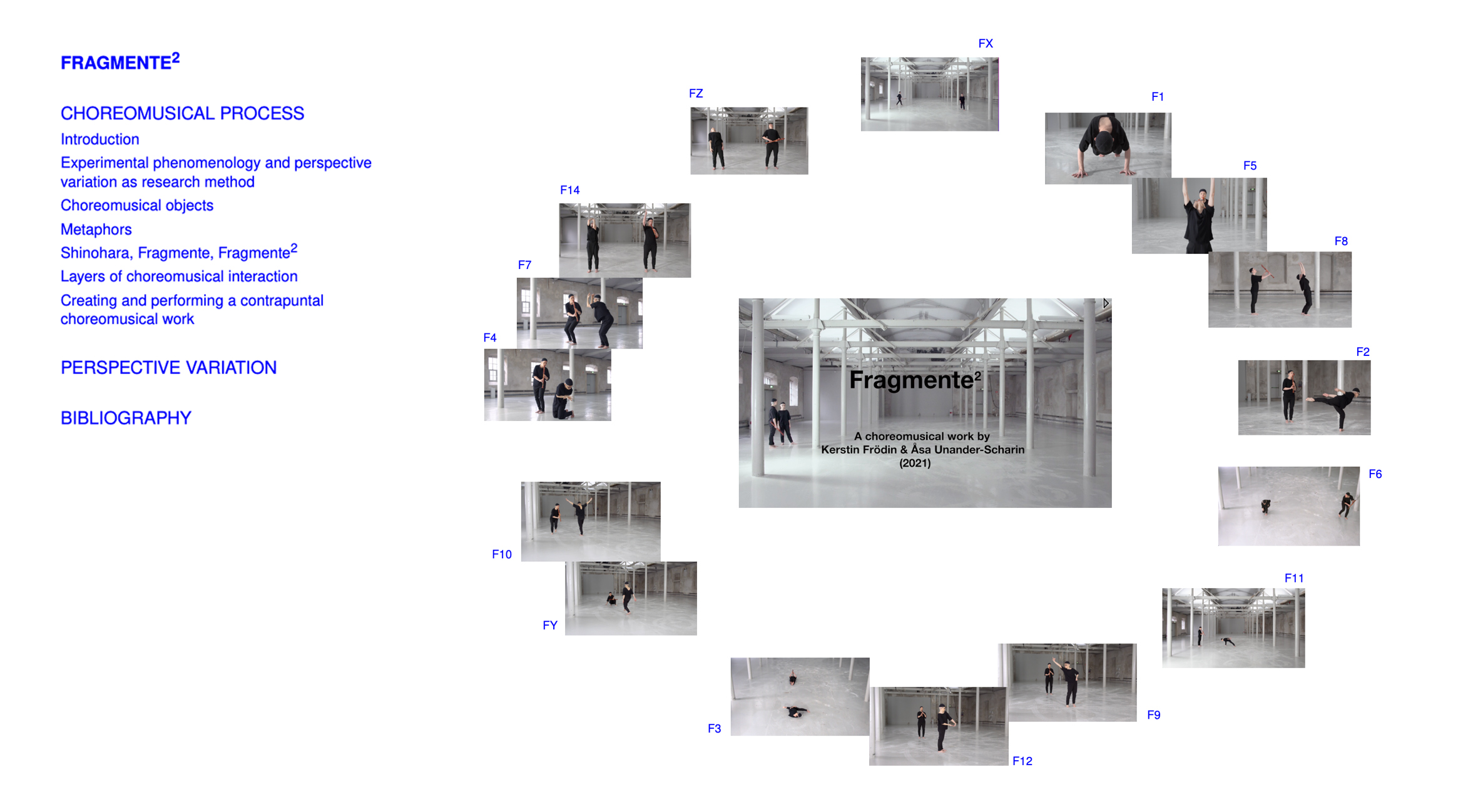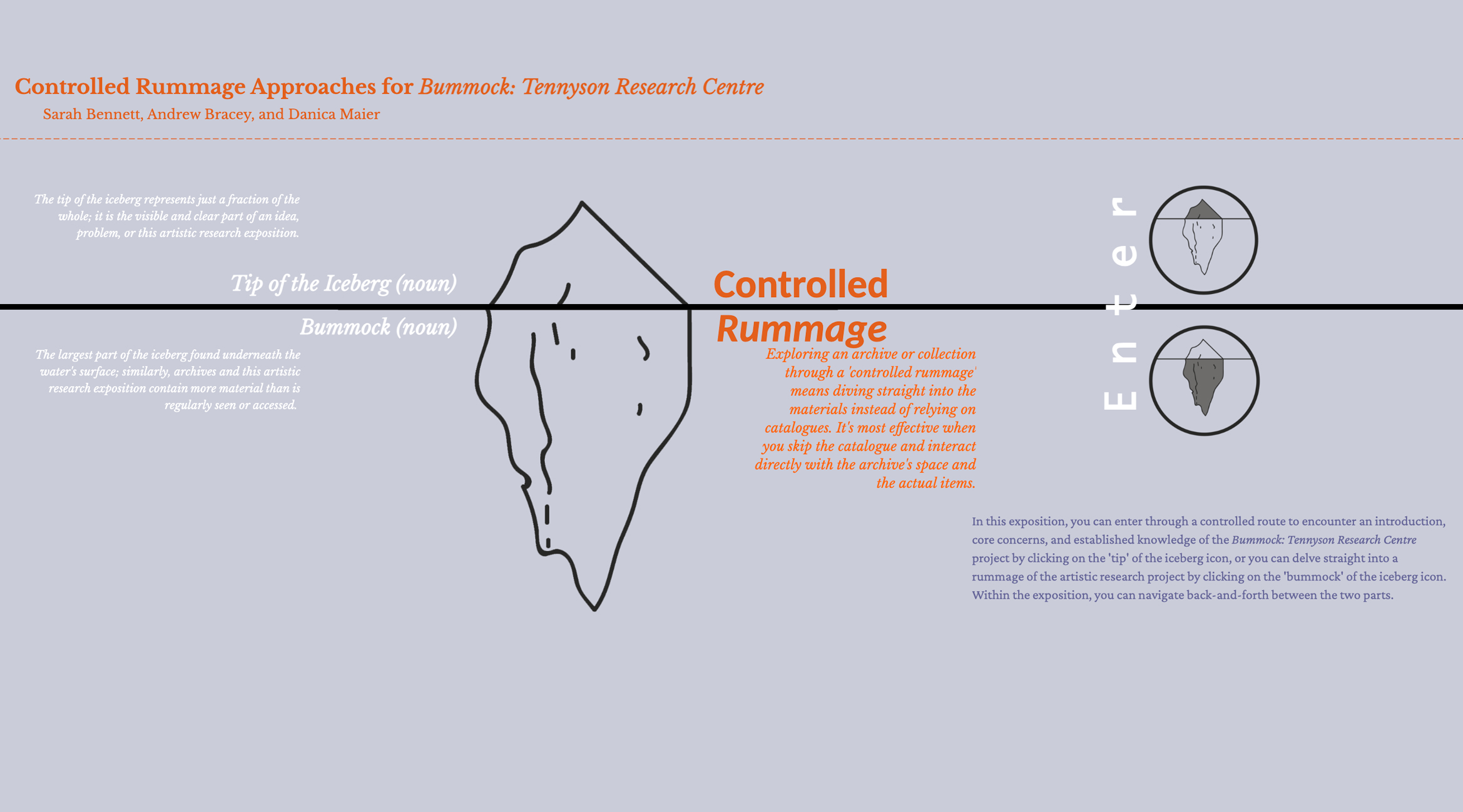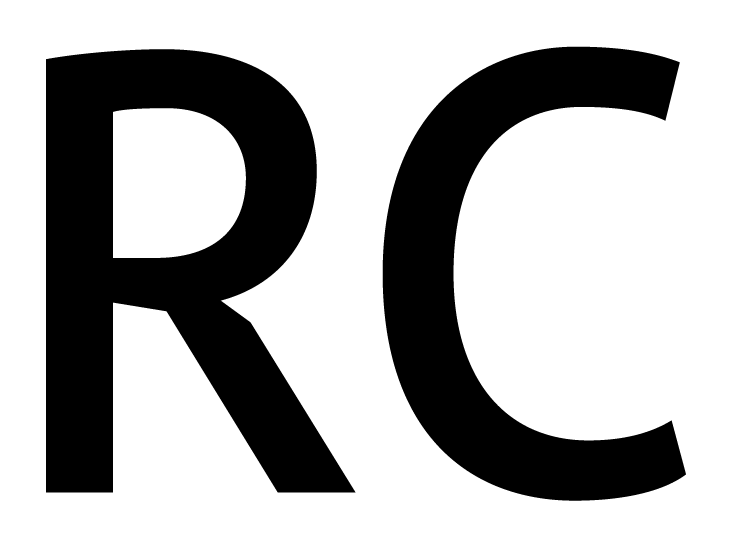Annual Prize for Excellent Research Catalogue Exposition 2024
RC Prize Winner 2024
Fragmente2
by Kerstin Frödin and Åsa Unander-Scharin
The jury hereby awards first place to the exposition Fragmente2 for its integrity and expositionality. This is the collective work of a two-member research team and presents as a cleanly crafted exposition, which communicates a rich ethnographic study of a choreomusical collaborative work. The exposition is exploring the relationship between music and dance in artistic research. Oscillating between final documentation and a sharing of the process archive through presenting numerous fragments, the reader gets invited to create their own experience and connect it to proposed precise analyses.
Although graphically simple, the exposition represents an exemplary use of multiple spaces that enable different modes of exposing and experiencing the research materials on the Research Catalogue.
View Fragmente2The Executive Board of SAR is delighted to announce the winner of the Annual Prize for Excellent Research Catalogue Exposition 2024. We received 19 eligible submissions for the prize. The diversity and quality of the nominated expositions and the interest of the creators is evidence of the development of the Research Catalogue and its use for documentation, presentation and exposition of artistic research and for supervision. This year we saw an increased number of expositions that present artistic research at the level of master's degree programs.
The nominated expositions testify to different approaches to using the Research Catalogue as a tool for group research, interdisciplinary research, individual research and each reflect a thoughtful effort in the use of the RC’s possibilities. The prize aims to foster and encourage innovative, experimental new formats of publication and to give visibility to the qualities of artistic research artefacts.
This year, among the nominated expositions, we tried to highlight those that use the Research Catalogue innovatively and depart from previously formulated formats and usage patterns. We asked ourselves to what extent the previously innovative forms become a new standard and thus a template. Therefore, we were looking for expositions that are pushing the boundaries of standard formats, and do not use the Research Catalogue merely as a showcase but as a living platform that enables experiencing the artistic research process.
We emphasised those expositions that foreground artistic research practices and artefacts, rather than focusing mainly on their discursive mediation and contextualisation. Whilst professionally designed expositions are becoming increasingly common, we recognise the value of a simply presented ‘less is more’ approach, alongside more idiosyncratic and unexpected modes of sharing.
Given the complexity of the judging process and the great diversity of the entries, this year the SAR Executive Board tested a new approach, which was approved and entrusted to its focus group dedicated to the development of the Annual Prize. Board members Paolo Luís Almedia, Blanka Kolegar, and Jan Schacher carried out the first round of assessment, which resulted in a shortlist of 5 expositions being presented to the jury. The jury included the finalist of RC Annual Prize 2023 Emma Cocker, and two board members Blanka Kolegar and Jan Schacher.
The jury agreed that the exposition “Fragmente 2” by Kerstin Frödin and Åsa Unander-Scharin fulfils the criteria in an exemplary way and is therefore attributed the prize. As the runner up finalist the jury selected the exposition “Controlled Rummage Approaches for Bummock: Tennyson Research Centre” by Danica Maier, Sarah Bennett, and Andrew Bracey and the jury decided to give a special mention or 2nd finalist place to “Why I Paint Thousands of Circles” by Leanna Moran.
Winner and Finalists
Kerstin Frödin and Åsa Unander-Schairin
The jury hereby awards first place to the exposition Fragmente2 for its integrity and expositionality. This is the collective work of a two-member research team and presents as a cleanly crafted exposition, which communicates a rich ethnographic study of a choreomusical collaborative work. The exposition is exploring the relationship between music and dance in artistic research. Oscillating between final documentation and a sharing of the process archive through presenting numerous fragments, the reader gets invited to create their own experience and connect it to proposed precise analyses.
Although graphically simple, the exposition represents an exemplary use of multiple spaces that enable different modes of exposing and experiencing the research materials on the Research Catalogue.
View Exposition
Danica Maier, Sarah Bennett, Andrew Bracey
The exposition Controlled Rummage Approaches for Bummock: Tennyson Research Centre is structured in a coherent way according to a conceptual basis and serves as a rigorous documentation of the documented research project. It creates two different points of entry and engagement with the archives and offers a performative way of connecting with this research project.
Laying out archival materials in addition to texts and media enables the reader to navigate their own path through the archival objects from the TRC and the artworks created. A collective work of a three-member research team, the graphical refinement and well-thought-out structure makes this a strong demonstration of the Research Catalogue’s potentials.
View Exposition
Leanna Moran
The exposition Why I Paint Thousands of Circles shows the fragmented collage of materials as an "ar(t)chaeological archive” and invites an intuitive mode of navigation between both personal and public archival materials. With an auto-ethnographic orientation, this exposition combines highly intimate autobiographical vignettes and newspaper fragments to expose the interweaving and co-relation of the highly-charged personal and socio-political histories within mid 90's working class North West London. Presented from the position of an emerging researcher, this exposition engages with the Research Catalogue in a very individual, exploratory way, not seeking to present a finished work. The consistency of the presentation, which is presented in a very dense vertical exposition, is its strength – the exposition appears to not be about answering questions, but about consistently asking questions.
View Exposition
ABOUT THE RC PRIZE
The annual RC prize aims to foster and encourage innovative, experimental new formats of publication and, on the other hand, to give visibility to the qualities of artistic research artefacts.
-
Each year a new jury, consisting of a member of the SAR Executive Board, representatives from a Portal Partner and a former prize winner, is appointed.
-
Following an in-depth review, a shortlist is made public. The winner is announced at the annual SAR conference in the spring.










